Nonmetallic gaskets are normally used in low temperature and pressure applications. Usually composite sheet materials are used with flat face flanges and low pressure class applications.
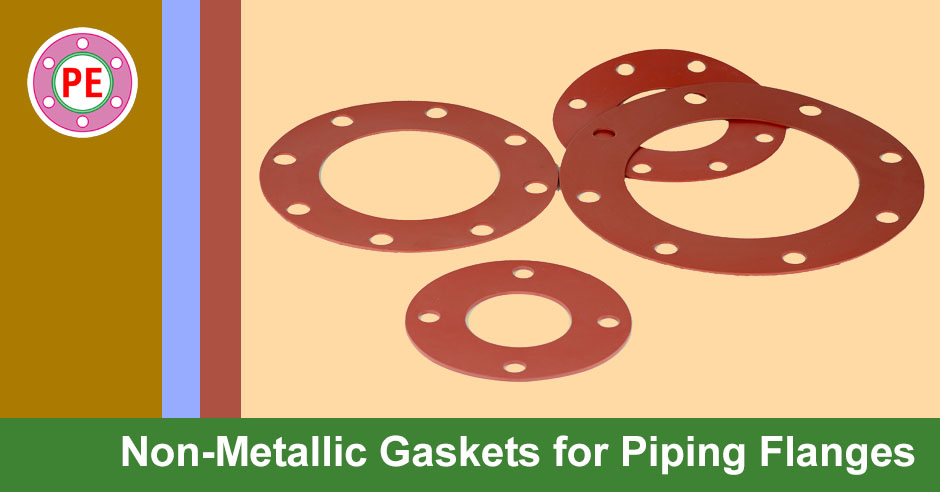
Materials of Construction
Gaskets are made of resilient or pliable materials. Metal or nonmetal composites may be incorporated as reinforcement or filler material. Non-metallic gaskets are manufactured non-asbestos material or Compressed Asbestos Fibre (CAF). Non-asbestos types include :
- Arimid Fibre,
- Glass Fibre,
- Elastomer,
- Teflon (PTFE)
- Flexible Graphite.
PTFE or RPTFE are used in high corrosive applications.
[google-square-ad]
Types of Non-Metallic Gaskets
- Full face gasket : Suitable for use with flat-face (FF) flanges and
- Flat-ring gasket : Suitable for use with raised face (RF) flanges.
Applicable Standards
ASME B16.21 : Non-metallic flat gaskets for pipe flanges.
This Standard covers types, sizes, materials, dimensions, tolerances, and markings for nonmetallic flat gaskets.
Gasket Markings
Gaskets shall be packaged with NPS, Class, gasket manufacturer’s name, material designation, thickness, and ASME B16.21 marked or tagged on the package or gasket. At the option of the manufacturer, the DN designation may be included.
Elastomer Gaskets
SBR : Styrene Butadiene Gasket
SBR is a synthetic rubber that has excellent abrasion resistance and has good resistance to weak organic acids, alcohols, moderate chemicals and ketones. It is not good in ozone, strong acids, fats, oils, greases and most hydrocarbons. Its temperature range would be from approximately -65° F to 250° F.
CR (CHLOROPRENE) (NEOPRENE)
Chloroprene is a synthetic rubber that is suitable for use against moderate acids, alkalies and salt solutions. It has good resistance to commercial oils and fuels. It is very poor against strong oxidizing acids, aromatic and chlorinated hydrocarbons. Its temperature range would be from approximately -60° F to 250° F.
[google-square-ad]
NBR : Nitrile Rubber
This is used as binder for flat gaskets for general services like Cooling Water, Fire Water, Raw Water, Tempered Water, Plant Air, Nitrogen, Pumped oily Water, Sanitary Waste Water.
This synthetic rubber is unusual in being generally resistant to oil, fuel, and other chemicals (the more nitrile within the polymer, the higher the resistance to oils but the lower the flexibility of the material).
EPDM (ETHYLENE PROPYLENE)
This synthetic material has good resistance to strong acids, alkalies, salts and chlorine solutions. It is not suitable for use in oils, solvents or aromatic hydrocarbons. Its temperature range would be between -70° F to 350° F.
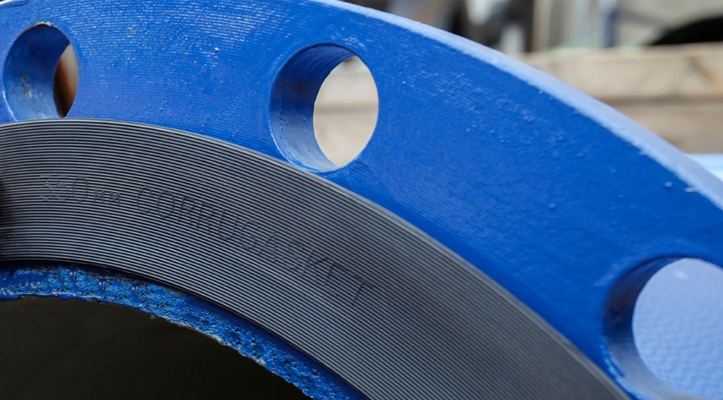
Compressed Asbestos Fibre Gaskets
Early efforts to replace asbestos resulted in the introduction and testing of compressed non-asbestos products in the 1970s. Many of these products have seen extensive use since that period however there have been enough problems to warrant careful consideration in choosing a replacement material for compressed asbestos. Most manufacturers of non-asbestos sheet materials use synthetic fibers, like Kevlar, in conjunction with an elastomeric binder. The elastomeric binder makes up a larger percentage of this sheet and thereby becomes a more important consideration when determining applications.
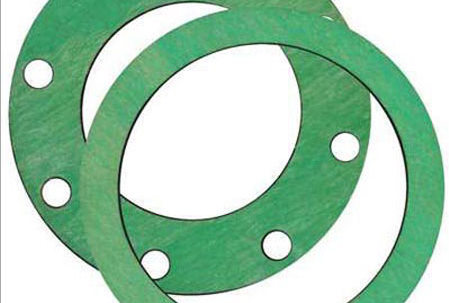
[google-square-ad]
Flexible Graphite Gaskets
This is an all graphite material containing no resins or inorganic fillers. It is available with or without a metal insertion, and in adhesive-back tape form. Flexible Graphite has outstanding resistance to corrosion against a wide variety of acids, alkalies and salt solutions, organic compounds, and heat transfer fluids, even at high temperatures.
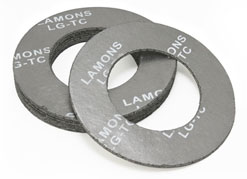
MICA Gaskets
Mica sheet is a readily-processible form comprised of a high percentage of mineral held together with a small amount of silicon binder. Its lamellar and non-fibrous structure, together with the low ratio of binder allows for a significant reduction of weight loss at elevated temperatures, and especially when compared to other high temperature compositions. It resists a wide array of chemicals and is unaffected by water, acids, bases, solvents and mineral oils.
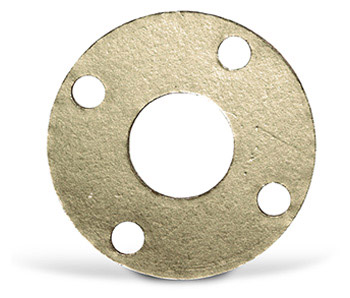
PTFE Gaskets
Of all the plastics, PTFE (Polytetrafluoroethylene) have emerged as the most common plastic gasket material. PTFE’s outstanding properties include resistance to temperature extremes from -140ºF to 450ºF (for virgin material). PTFE is highly resistant to chemicals, solvents, caustics and acids except free fluorine and alkali metals. It has a very low surface energy and does not adhere to the flanges. PTFE gaskets can be supplied in a variety of forms; either as virgin or reprocessed material, and also with a variety of filler material. The principal advantage in adding fillers to PTFE is to inhibit cold flow or creep relaxation.
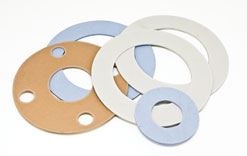
[google-square-ad]
Sample Piping Material Specification
Applications : Gaskets for Cooling Water, Fire Water, Raw Water, Tempered Water, Plant Air, Nitrogen, Pumped oily Water, Sanitary Waste Water
- Type : Non metallic flat gasket
- Filler Material : Glass Fibre
- Binding Material : NBR
- Thickness : 2 MM
- Rating : 150
- Face Type : Between flanges raised face.
- Dim. Std. : B16.21
- Flange Std : B16.5 and B16.47B
- Temperature Range : -40 deg C to 108 Deg. C
